Did you know that over 35% of adults in the United States eat fast food daily?
This statistic highlights the challenges many people face in maintaining a healthy diet due to busy schedules and lack of planning.
This article dives into the world of meal prepping, a powerful tool that can help you achieve your weight loss or muscle gain goals.
We’ll explore the benefits of meal prep, how it can fuel your fitness journey, and provide practical strategies to create a personalized meal plan that fits your lifestyle.
Understanding Meal Prep for Weight Loss and Muscle Gain
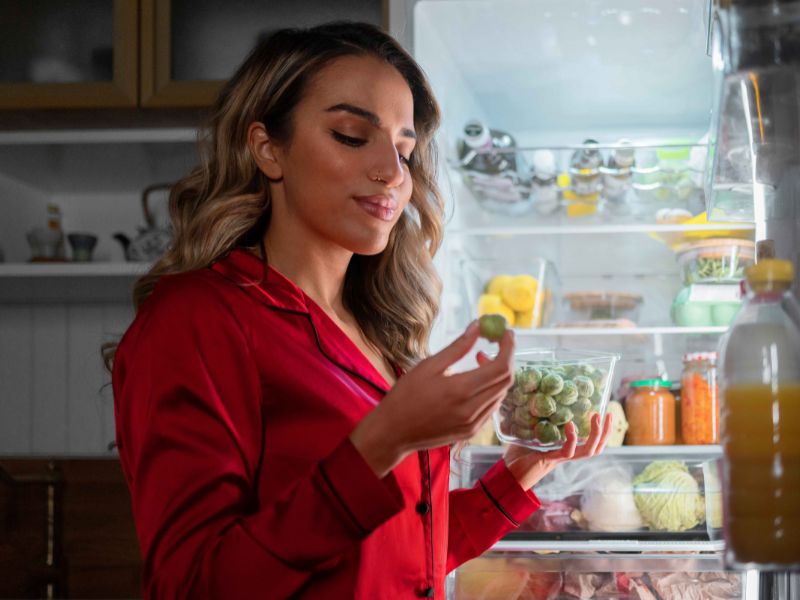
Defining Meal Prep and Its Benefits
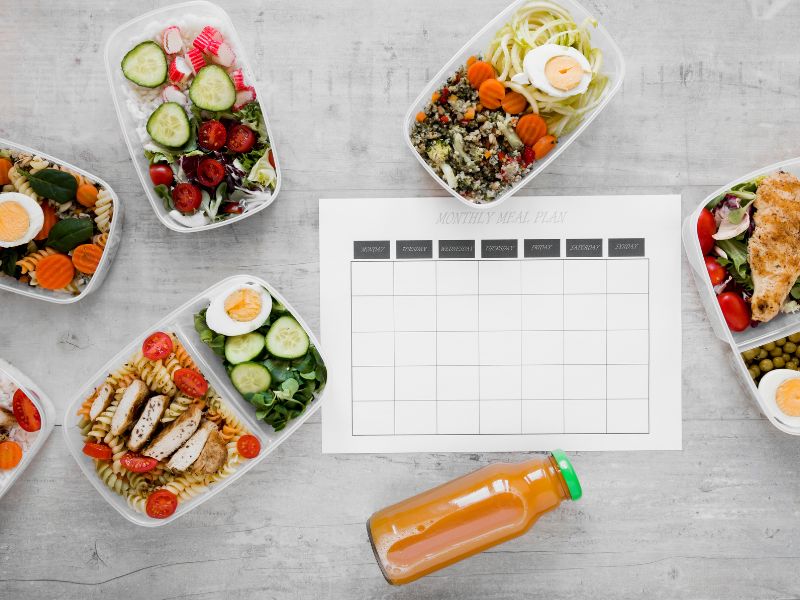
Meal prep, short for meal preparation, is the practice of planning and preparing your meals in advance.
It involves cooking and portioning out your food ahead of time, so you have healthy, ready-to-eat meals on hand throughout the week.
The benefits of meal prep are immense:
- Time-saving: By dedicating a chunk of time to cooking and prepping on a weekend or a designated meal prep day, you can save yourself hours of cooking during the busy workweek.
- Money-saving: Eating out or grabbing takeout can quickly add up, but meal prep allows you to buy ingredients in bulk and cook meals at home, saving you a significant amount of money in the long run.
- Healthier choices: When you have nutritious meals prepared and waiting for you, you’re less likely to reach for unhealthy options like fast food or processed snacks.
- Portion control: By pre-portioning your meals, you can avoid overeating and stay on track with your calorie goals.
- Reduced stress: Say goodbye to the daily dinner dilemma. With meals already prepared, you can relax and enjoy your evenings without the stress of cooking.
How Meal Prep Supports Weight Loss and Muscle Gain?
Beyond the obvious benefits of saving time, money, and stress, meal prep is a secret weapon for achieving your weight loss and muscle gain goals.
Here’s how:
- Consistent Nutrition: One of the biggest challenges in maintaining a healthy diet is consistency. With meal prep, you can ensure that you’re getting the right balance of nutrients every day, which is crucial for fueling your workouts and supporting muscle growth.
- Controlled Portions: It’s easy to overeat when faced with large restaurant portions or tempting snacks. With meal prep, you have the power to control your portion sizes, making it easier to stick to your calorie goals and avoid unnecessary weight gain.
- Better Food Choices: When you have healthy, home-cooked meals waiting for you in the fridge, you’re less likely to succumb to the temptation of fast food or processed snacks. Plus, you can customize your meals to include nutrient-dense foods that support your fitness goals.
- Optimized Macros: Protein, carbohydrates, and fats are the building blocks of a balanced diet, especially when it comes to building muscle and losing fat. With meal prep, you can ensure that each meal contains the right balance of macros to fuel your workouts and support recovery.
- Improved Energy Levels: Eating regular, balanced meals throughout the day can help stabilize your blood sugar levels and provide a steady source of energy, keeping you fueled for your workouts and preventing energy crashes.
Macronutrients (Macros): Protein, Carbs, and Fat
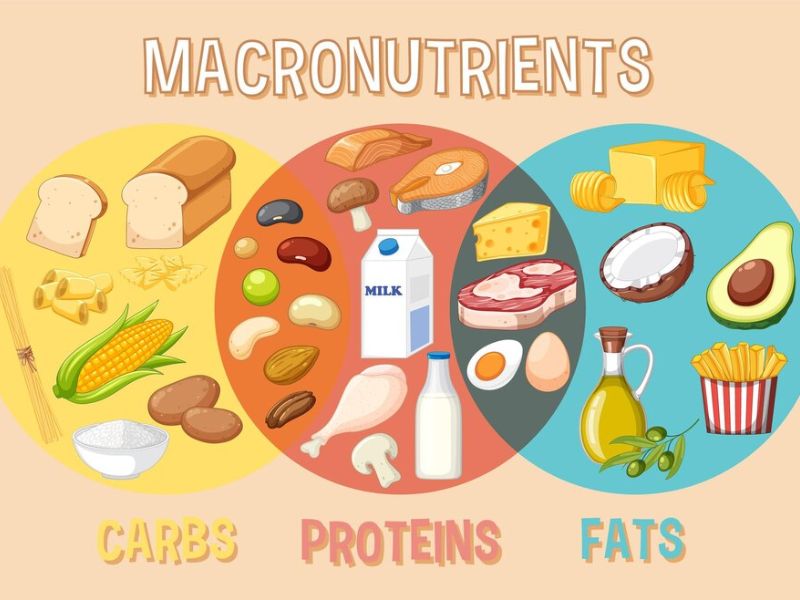
Macronutrients (Macros): Protein, Carbs, and Fat:
When it comes to meal prep, understanding macronutrients is essential for creating balanced, nutritious meals.
- Protein: Protein is crucial for muscle repair and growth. Include lean sources of protein such as chicken, turkey, fish, tofu, and legumes in your meal prep to support your muscle-building efforts.
- Carbohydrates: Carbs provide your body with energy, making them essential for fueling your workouts and supporting recovery. Opt for complex carbohydrates like brown rice, quinoa, sweet potatoes, and whole grains to keep you feeling full and energized.
- Fat: Healthy fats are necessary for hormone production, brain function, and nutrient absorption. Include sources of unsaturated fats such as avocados, nuts, seeds, and olive oil in your meals to support overall health.
Micronutrients (Vitamins and Minerals): The Unsung Heroes
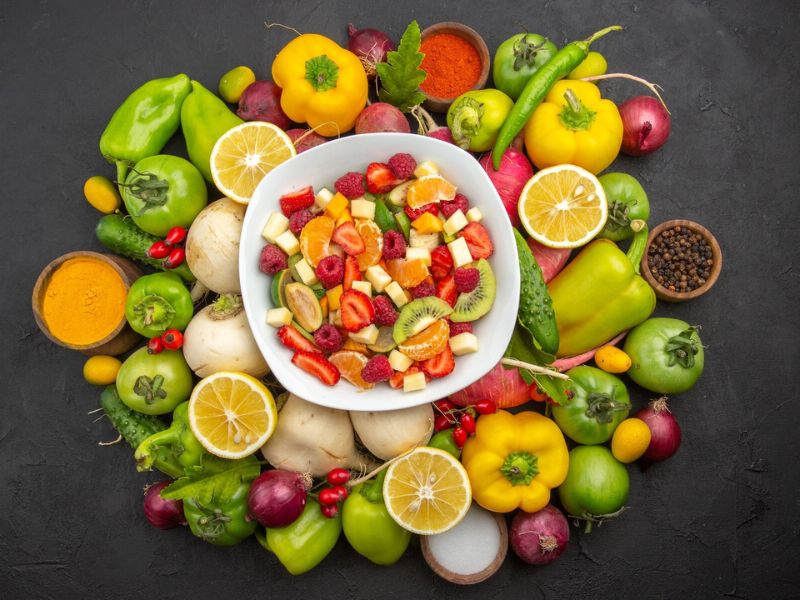
While macros get a lot of attention, micronutrients are equally important for overall health and well-being.
Micronutrients include vitamins and minerals that play essential roles in various bodily functions, from immune function to bone health.
- Vitamins: Ensure that your meals contain a variety of fruits and vegetables to provide a wide range of vitamins, including vitamin A, vitamin C, vitamin D, and vitamin E.
- Minerals: Incorporate mineral-rich foods such as leafy greens, nuts, seeds, and whole grains to meet your body’s needs for essential minerals like calcium, magnesium, iron, and zinc.
How Many Calories Should You Eat?

Determining your calorie needs is crucial for achieving your weight loss or muscle gain goals.
Your total daily energy expenditure (TDEE) represents the number of calories your body needs to maintain its current weight.
To lose weight, you’ll need to consume fewer calories than your TDEE, while to gain muscle, you’ll need to consume more.
- Calculating your TDEE: There are several online calculators available that can help you estimate your TDEE based on factors such as age, gender, weight, height, and activity level.

- Adjusting your calorie intake: Once you’ve determined your TDEE, you can adjust your calorie intake based on your goals. Aim for a moderate calorie deficit if you’re looking to lose weight or a slight calorie surplus if you’re aiming to gain muscle.

Creating Your Meal Plan
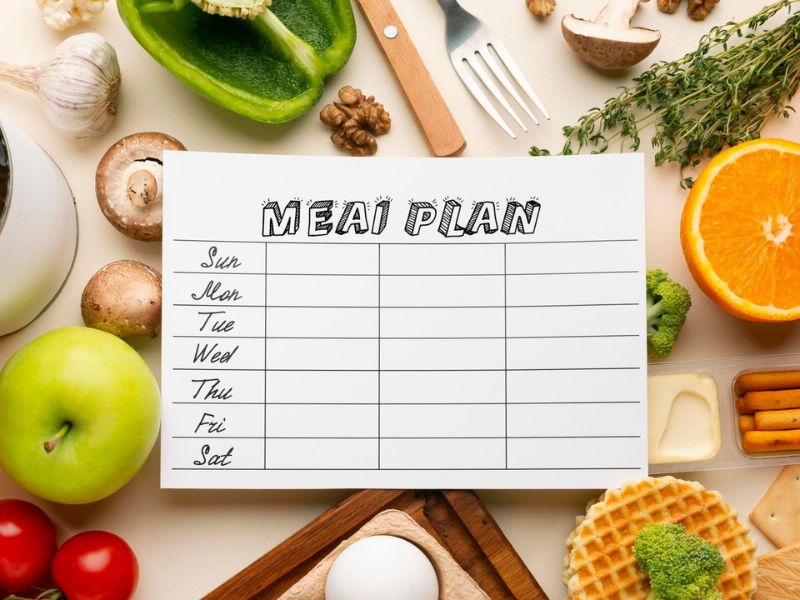
Step-by-Step Guide to Crafting a Personalized Meal Plan
Building a winning meal plan doesn’t have to be a complex feat.
Here’s a breakdown to get you started:
- Know Your Goals: The first step is understanding your unique goals. Are you aiming for weight loss, muscle gain, or body recomposition (building muscle while losing fat)? This will determine your overall calorie intake and macronutrient (macro) ratios (protein, carbs, and fat).
- Calculate Your TDEE: Your Total Daily Energy Expenditure (TDEE) is the total number of calories your body burns in a day. There are online calculators and apps to estimate your TDEE. Once you have this number, you can adjust it based on your goals. For weight loss, you’ll aim for a slight calorie deficit, and for muscle gain, a small surplus.
- Macronutrient Magic: Now comes the fun part: determining your ideal macro breakdown. Protein is crucial for muscle building and repair. Aim for 0.8-1 gram of protein per pound of body weight for muscle gain. Carbs provide energy, and complex carbs from whole grains and vegetables are your best bet for sustained energy. Healthy fats from sources like avocados and nuts are essential for hormone regulation and satiety (feeling full).
- The Flavorful Battlefield – Choosing Your Foods: Now comes the fun part: stocking your fridge with a variety of healthy and delicious options. Here are some tips:
- Focus on whole foods: Think lean protein sources (chicken, fish, legumes), complex carbs (whole grains, vegetables), and healthy fats (avocados, nuts).
- Spice things up! Explore different spices and herbs to add flavor without extra calories.
- Consider dietary needs: Do you have any allergies or follow a specific diet (vegetarian, vegan, etc.)? There are endless healthy options to cater to your needs.
Choosing the Right Foods for Meal Prepping
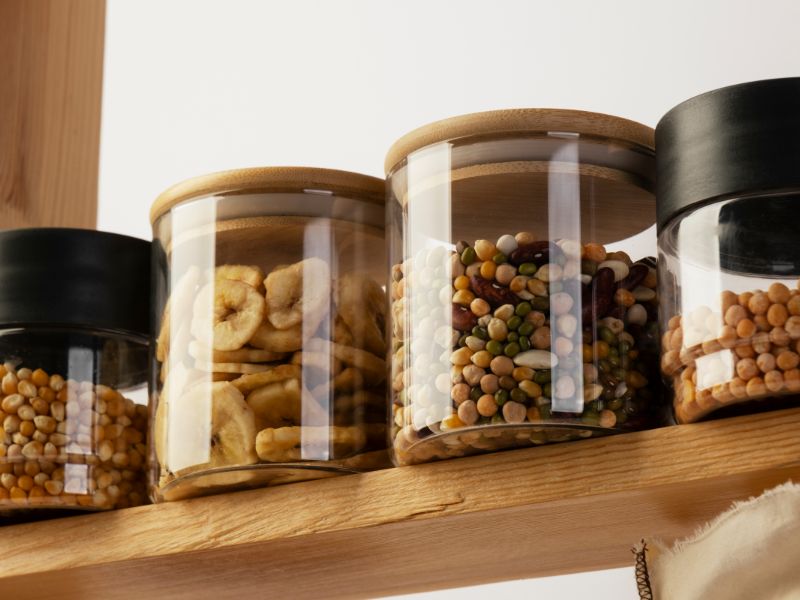
Top Foods to Include in Your Meal Plan
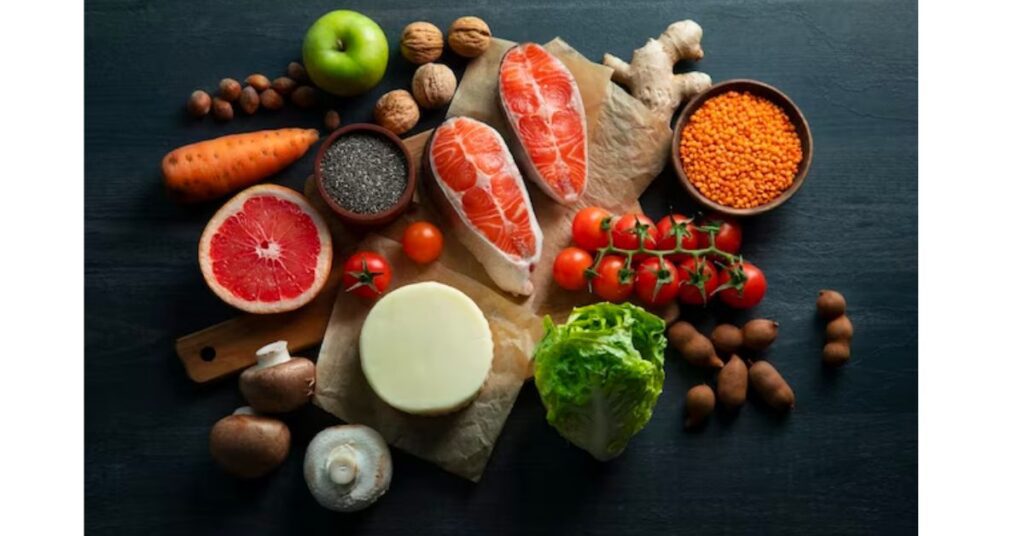
When it comes to meal prep, focus on nutrient-dense powerhouses that are easy to prepare and store well.
Here’s your dream team:
- Protein Powerhouses:
- Lean meats and poultry: Chicken breast, turkey breast, lean ground beef, and fish (salmon, tuna) are excellent sources of protein for muscle building and repair.
- Eggs: A versatile and affordable protein source, perfect for breakfast, lunch, or post-workout snacks.
- Plant-based protein: Lentils, beans, tofu, and tempeh provide protein for vegetarians and vegans.
- Carb Champs:
- Whole grains: Brown rice, quinoa, whole-wheat bread, and sweet potatoes offer sustained energy for your workouts.
- Vegetables: Aim for a rainbow of colors! Vegetables are packed with vitamins, minerals, and fiber, crucial for overall health and digestion.
- Healthy Fat Friends:
- Avocados: A delicious source of healthy fats, fiber, and potassium.
- Nuts and seeds: Almonds, walnuts, chia seeds, and flaxseeds provide healthy fats, protein, and fiber, keeping you feeling full for longer.
- Healthy oils: Olive oil, avocado oil, and nut oils are excellent for cooking and salad dressings.
Strategies for Incorporating Variety and Flavor
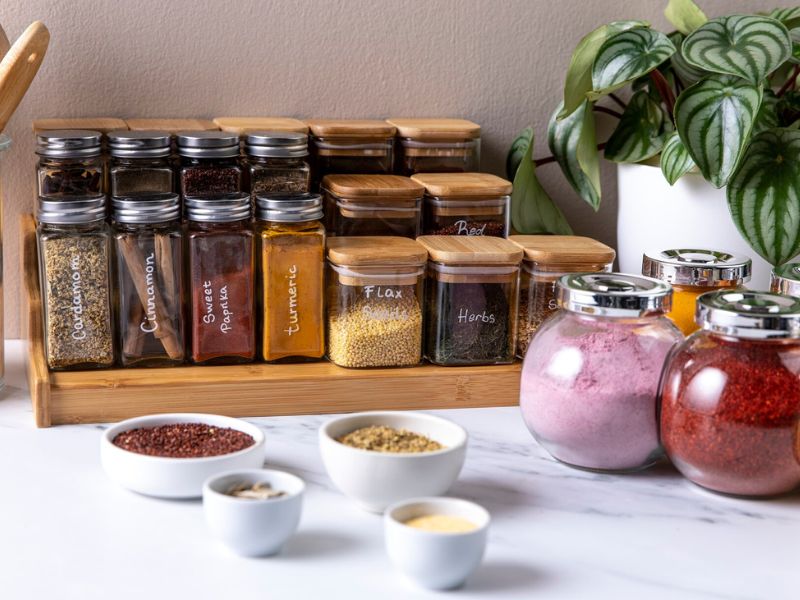
Meal prep doesn’t have to be boring.
Here’s how to keep your taste buds happy:
- Herbs and Spices: Explore different herbs and spices like rosemary, thyme, chili powder, and turmeric to add flavor depth without extra calories.
- Marinades and Sauces: Marinate your protein sources for added flavor. Experiment with low-sugar sauces like salsa or pesto.
- Veggie Versatility: Don’t be afraid to get creative with vegetables. Roast them, stir-fry them, or add them to soups and stews.
- Leftover Magic: Repurpose leftover cooked chicken or fish into salads, wraps, or fajitas for a quick and flavorful lunch.
- Try New Recipes: Don’t get stuck in a rut. Challenge yourself to try new recipes and cuisines to keep your taste buds excited. Look for inspiration online, in cookbooks, or from friends and family members.
Meal Prep Frequency and Duration
Determining the Ideal Meal Prep Schedule

The ideal meal prep frequency depends on several factors, including your:
- Consider Your Lifestyle: Take a moment to assess your schedule and lifestyle. Are you someone who prefers to cook in bulk and have meals prepared for the entire week? Or do you enjoy cooking fresh meals more frequently? Your meal prep schedule should align with your lifestyle and preferences to ensure sustainability.
- Evaluate Your Storage Space: Another factor to consider is your storage space. Do you have enough room in your fridge and freezer to store meals for an entire week? If not, you may need to opt for more frequent meal prep sessions to avoid overcrowding your kitchen.
- Account for Freshness: While meal prepping can save you time and stress during the week, it’s essential to consider the freshness of your ingredients. Some foods, particularly fresh produce and proteins, may not stay fresh for an entire week. If you prioritize freshness, you may prefer to meal prep more frequently.
- Plan for Variety: Variety is the spice of life, and it’s essential to keep your meals interesting and flavorful. Consider rotating your meal prep schedule to incorporate different recipes and ingredients each week, keeping your taste buds excited and engaged.
Here are some popular meal prep schedules to consider
- The Weekend Warrior: This is the most common approach. Dedicate 2-3 hours on a weekend day to prep all your meals for the week. Ideal for those with consistent schedules and enough fridge space.
- The Bi-Weekly Batch: Prep half your meals for the week on Sunday and the other half on Wednesday or Thursday. This offers more variety and caters to busier schedules or those with limited fridge space.
- The Daily Grind: If you enjoy cooking or have unpredictable work hours, consider prepping just 1-2 meals per day. This allows for more flexibility and reduces food waste if your plans change.
Weekly vs. Bi-Weekly Meal Prep: A Head-to-Head

Let’s delve deeper into the two most popular options:
Weekly Meal Prep:
- Pros: Convenient, minimizes daily decision fatigue, and saves time during busy weeks.
- Cons: This can lead to boredom with repetitive meals if you don’t incorporate variety. Requires sufficient fridge space.
Bi-Weekly Meal Prep:
- Pros: Offers more variety within a week, and may be less time-consuming than weekly prep.
- Cons: Requires more frequent planning and prepping. May not be ideal for those with limited fridge space.
The Takeaway: Experiment and Find Your Sweet Spot!
There’s no right or wrong answer. Experiment with different meal prep schedules and see what works best for you. Here are some additional tips:
- Prep staples in bulk: Cook a large batch of brown rice, quinoa, or roasted vegetables to use throughout the week. This saves time when assembling meals.
- Get creative with leftovers: Leftovers can be repurposed into new dishes! Leftover chicken can be transformed into a stir-fry or chicken salad.
- Involve the family: Delegate tasks! Assign family members to help with chopping vegetables or washing containers.
Effective Meal Planning Strategies
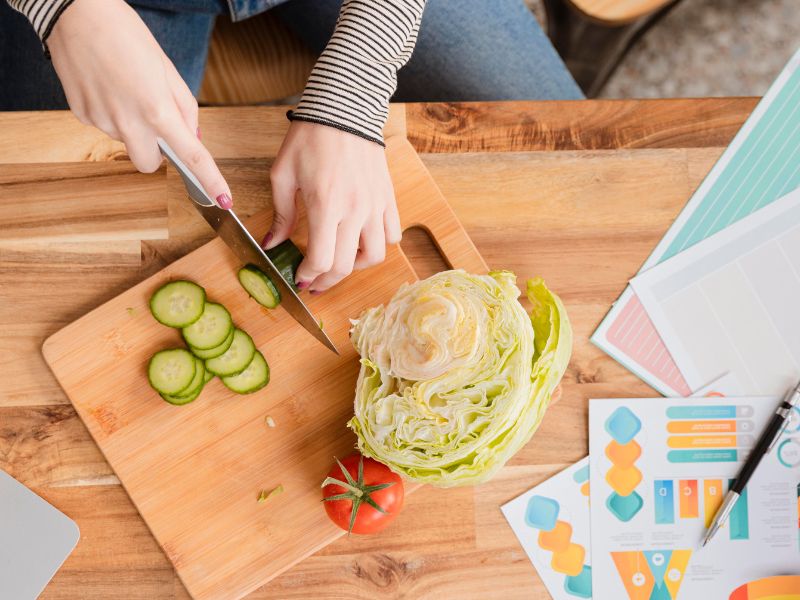
Tips for Efficient Meal Prepping
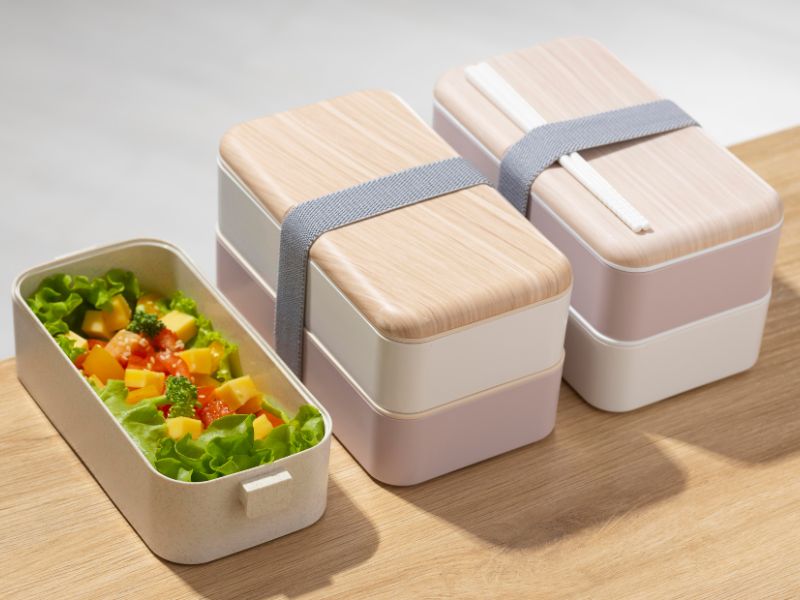
- Embrace Batch Cooking: This is your time-saving BFF. Cook a large pot of quinoa, brown rice, or roasted vegetables on the weekend. These staples can be used throughout the week in various dishes, saving you prep time each day.
- Chop Once, Prep Multiple Meals: Dedicate 20-30 minutes to chop vegetables like onions, peppers, and broccoli. These prepped veggies can be used in multiple meals throughout the week, saving you time during final assembly.
- Utilize Kitchen Shortcuts: Don’t underestimate the power of pre-cut vegetables, frozen fruits, and pre-cooked proteins (like grilled chicken breast or frozen shrimp) to expedite the process.
- Sheet Pan Dinners are Your Savior: These one-pan wonders are perfect for busy weeknights. Toss together protein, veggies, and seasonings on a sheet pan, and let the oven do the work!
- Leftover Magic: Leftovers can be your secret weapon for lunch or repurposed into entirely new dishes. Leftover chicken can be transformed into a stir-fry or chicken salad, and roasted vegetables can be added to omelets or wraps.
Maximizing Nutritional Value While Minimizing Prep Time
Here are some tips to ensure your meals are healthy and delicious without sacrificing precious time:
- Focus on Simple, Nutrient-Dense Ingredients: Prioritize whole grains, lean proteins, and colorful vegetables. These offer a powerhouse of nutrients without requiring complicated preparation.
- Simple Seasonings are Your Flavor Friends: A sprinkle of herbs, spices, or a drizzle of a flavorful sauce can elevate a simple meal. Invest in a good spice rack to keep your taste buds happy.
- Don’t Fear Frozen: Frozen fruits and vegetables are flash-frozen at peak ripeness, locking in nutrients. They’re a convenient and budget-friendly option for adding variety and vitamins to your meals.
- Smart Shopping: Plan your meals around seasonal produce, which is often more affordable and fresher. Frozen vegetables can be a lifesaver – they’re flash-frozen at peak ripeness, locking in nutrients.
- Pre-washed Produce: Many grocery stores offer pre-washed and chopped vegetables, saving you prep time without compromising quality.
- Marinate Like a Master: Marinades not only infuse flavor but also tenderize meats, making them cook faster. This is a win-win for taste and time efficiency.
How to Batch Cook and Store Meals for Longevity

Once you’ve prepped your meals, proper storage is key to ensure they stay fresh and delicious throughout the week.
Here are some essential tips:
- Know Your Containers: Invest in high-quality, reusable containers that are airtight and leakproof. This prevents contamination and ensures your food stays fresh.
- Portion Control Power: Pre-portioning your meals into individual containers prevents overeating and helps you stay on track with your calorie goals.
- Label It Up: Clearly label your containers with the date and contents. This helps you stay organized and avoid mystery meals lurking in the fridge.
- Storage Savvy: Store raw meat on the bottom shelf of your refrigerator to prevent accidental spills contaminating other foods. Cooked meals can be stored on higher shelves.
Sample Meal Plan
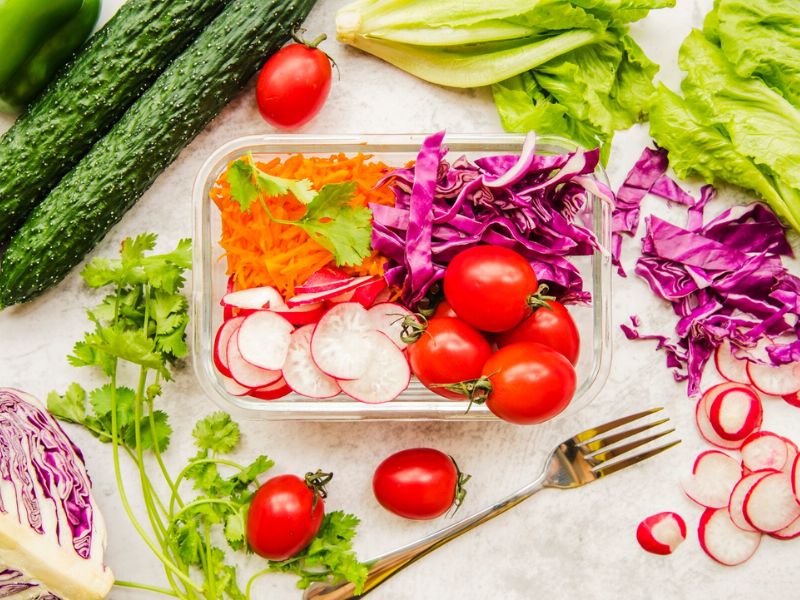
Day 1:
- Pre-Workout: Banana with a tablespoon of peanut butter
- Breakfast: Masala Omelet (3 eggs scrambled with chopped onions, tomatoes, and green chilies) with 2 whole wheat rotis
- Post-Workout: Whey protein shake with water
- Lunch: Chicken Curry (grilled chicken breast in a spiced tomato gravy) with brown rice and a side salad
- Dinner: Dal Makhani (black lentil curry) with steamed vegetables and 1 whole wheat roti
- Snacks: Fruits (apple, pear, or banana) with a handful of almonds
Day 2:
- Pre-Workout: Greek yogurt with sliced strawberries
- Breakfast: Oats cooked in milk with chopped nuts and a drizzle of honey
- Post-Workout: Cottage cheese with chopped vegetables
- Lunch: Tuna Salad Sandwich (canned tuna mixed with chopped vegetables and light mayonnaise) on whole wheat bread with a side salad
- Dinner: Fish Curry (baked fish in a flavorful coconut-based curry) with roasted vegetables and quinoa
- Snacks: Cottage cheese with chopped vegetables and a sprinkle of black pepper
Day 3:
- Pre-Workout: Apple slices with almond butter
- Breakfast: Scrambled eggs with spinach and whole wheat toast
- Post-Workout: Greek yogurt with a sprinkle of granola and berries
- Lunch: Moong Dal Khichdi (spiced lentil and rice dish) with a side of raita (yogurt-based dip with cucumber)
- Dinner: Chicken Stir-fry (stir-fried chicken with vegetables in a low-sodium soy sauce) with brown rice
- Snacks: Greek yogurt with a sprinkle of granola and berries
Day 4:
- Pre-Workout: Whole grain toast with mashed avocado
- Breakfast: Besan Cheela (savory chickpea flour pancake) with chopped vegetables and chutney (cilantro or mint dip)
- Post-Workout: Whey protein shake with water
- Lunch: Leftover Chicken Curry from Day 1 with brown rice and a side salad
- Dinner: Vegetable Pulao (aromatic rice dish with vegetables) with roasted chicken breast
- Snacks: Fruits (apple, pear, or banana) with a handful of almonds
Day 5:
- Pre-Workout: Greek yogurt with sliced mango
- Breakfast: Poha (flattened rice flakes stir-fried with vegetables and spices)
- Post-Workout: Cottage cheese with chopped vegetables
- Lunch: Salmon with roasted vegetables and quinoa
- Dinner: Rajma Masala (kidney bean curry) with brown rice and a side salad
- Snacks: Cottage cheese with chopped vegetables and a sprinkle of black pepper
Day 6:
- Pre-Workout: Whole grain toast with almond butter
- Breakfast: Vegetable Omelet (2 eggs with mixed vegetables) with 1 slice of whole wheat bread
- Post-Workout: Whey protein shake with water
- Lunch: Turkey Wrap (sliced turkey with lettuce, tomato, and mustard in a whole wheat wrap) with a side salad
- Dinner: Grilled Tofu with Stir-fried Vegetables and quinoa
- Snacks: Mixed nuts (almonds, walnuts, and cashews) with dried fruit (raisins or apricots)
Day 7:
- Pre-Workout: Banana with a tablespoon of almond butter
- Breakfast: Greek yogurt with granola and sliced strawberries
- Post-Workout: Cottage cheese with chopped vegetables
- Lunch: Quinoa Salad with Chickpeas, cucumber, tomatoes, and feta cheese
- Dinner: Beef Stir-fry with mixed vegetables and brown rice
- Snacks: Hummus with carrot and celery sticks
Calorie-Restricted Meal Plans
This section provides two Indian-inspired meal plans designed for those seeking calorie restriction. Each plan focuses on whole, nutritious ingredients to keep you feeling satisfied throughout the day.
The 1200-Calorie Powerhouse Plan
This plan prioritizes protein and fiber to keep you energized, all with an Indian twist.
- Breakfast (300 calories): Spiced Chia Pudding with Berries and Nuts: Soak chia seeds in coconut milk overnight with cardamom and cinnamon. Top with fresh berries and chopped nuts for a protein-rich breakfast.
- Lunch (400 calories): Tandoori Chicken Salad with Whole Wheat Roti and Raita: Marinate boneless, skinless chicken in yogurt with tandoori masala. Grill or bake the chicken and serve over a bed of chopped vegetables. Enjoy with a whole wheat roti and a cooling raita made with yogurt, cucumber, mint, and cumin.
- Dinner (400 calories): Salmon Tikka Masala with Roasted Vegetables and Brown Rice: This protein-packed dish features lean salmon marinated in yogurt and tandoori masala, served with roasted vegetables and brown rice.
- Snacks (200 calories total): Roasted Makhana (Fox Nuts) with cumin and chili flakes (100 calories) or A small bowl of Greek yogurt with turmeric and honey (100 calories).
The 1500-Calorie Whole Foods Feast
This plan emphasizes delicious, whole Indian foods to keep you satisfied.
- Breakfast (400 calories): Masala Omelette with Whole Wheat Toast and Avocado: Enjoy a spiced and protein-rich omelette with chopped vegetables and garam masala, served with whole wheat toast and sliced avocado.
- Lunch (500 calories): Chickpea Salad with Mixed Greens, Quinoa, and Lemon Vinaigrette: Combine cooked chickpeas with chopped vegetables and toss with cooked quinoa, a light lemon vinaigrette, and cilantro.
- Dinner (400 calories): Dal Makhani with Jeera Rice and a Side Salad: Savor the classic comfort food of Dal Makhani, a creamy black lentil dish, paired with fragrant jeera rice and a side salad for a well-rounded meal.
- Snacks (200 calories total): Mixed nuts and dried fruits for an energy boost (100 calories) or Low-fat Paneer Bhurji with chopped vegetables for a protein and calcium-rich snack (100 calories).
Meal Prepping on a Budget
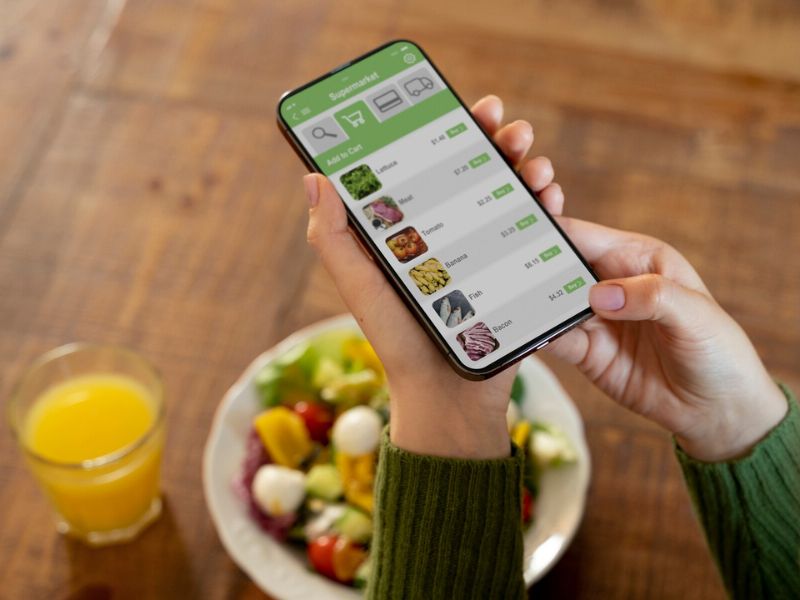
Practical Tips for Saving Money on Ingredients

- Plan Your Meals Around Weekly Sales: Newsflash! Grocery stores put items on sale for a reason. Plan your meals around what’s discounted that week. You can always get creative with substitutions!
- Embrace Seasonal Produce: Seasonal fruits and vegetables are not only cheaper but also bursting with flavor. Explore your local farmer’s market for fresh, seasonal options.
- The Power of Pulses: Dal (lentils) and beans are budget-friendly protein powerhouses. They’re incredibly versatile and can be incorporated into countless Indian dishes, keeping you feeling full and energized.
- Shop Smart, Not More: Planning your meals and creating a grocery list helps avoid impulse purchases. Stick to your list and resist the temptation of extra goodies.
- Cook in Bulk: This golden rule applies here too! Cooking a large pot of rice or lentils can be used in multiple dishes throughout the week, maximizing your ingredients and minimizing waste.
Budget-Friendly Meal Prep Ideas and Recipes
Now, let’s get real with some delicious and affordable meal prep options. Here are a few ideas to get you started:
- Spicy Chickpea Bowls: Cook a big batch of chickpeas (chole) in a slow cooker with your favorite spices. Prep brown rice, cucumber raita, and chopped onions and tomatoes. Assemble bowls throughout the week for a protein-packed, budget-friendly lunch.
- Tandoori Chicken Meal Prep: Marinate chicken breasts in yogurt, lemon juice, and tandoori masala. Bake or grill the chicken in bulk. Pair it with prepped roasted vegetables and whole wheat rotis for a complete and flavorful meal.
- Egg Bhurji Power: Scramble a large batch of eggs (a complete protein source!) with chopped onions, tomatoes, and chili peppers. Enjoy it for breakfast or a quick lunch with whole wheat toast or roti.
- Daal Khichdi Extravaganza: This comforting dish combines lentils (dal) and rice, cooked together with spices and vegetables. It’s incredibly budget-friendly, nutritious, and perfect for meal prep. Add chopped fresh coriander for extra flavor upon reheating.
Overcoming Challenges in Meal Planning
Addressing Common Obstacles and Pitfalls:

Here are some Common pitfalls for beginners’ meal planning:
- Lack of Time: This is a big one! Between work, family, and the gym, who has hours to dedicate to meal prep?
- Boredom with Repetitive Meals: Eating the same thing every day can quickly become, well, boring.
- Unforeseen Changes: Life happens! What happens to your perfectly portioned meals when you get stuck late at work or have an unexpected social event?
- Grocery Shopping Woes: Sticking to a grocery list and navigating sales can feel overwhelming.
- Willpower Wars: We’ve all been there. The allure of takeout after a long day can be mighty tempting.
Solutions for Consistency and Adaptability
Here’s how to overcome these challenges and become a meal prep pro:
- Embrace Time-Saving Hacks: Batch cooking, sheet pan dinners, and pre-chopping vegetables are your friends! Utilize slow cookers or Instant Pots for effortless meal prep.
- Variety is Key: Plan a variety of meals throughout the week to keep things interesting. Explore different flavors and cuisines to keep your taste buds happy.
- Be Flexible, Not Fragile: Life throws curveballs. If you get stuck late, have a backup plan like frozen pre-made brown rice or pre-washed salad mixes that can be quickly assembled into a healthy meal.
- Smart Shopping Strategies: Plan your meals around weekly sales flyers and stock up on pantry staples. Utilize grocery delivery services to save time at the store.
- Meal Prep Prep Your Willpower: Portion control containers and labeling your meals can help you stay on track. Additionally, prepping healthy snacks can curb cravings and prevent unhealthy choices later.
Conclusion
In conclusion, meal planning is a powerful tool for achieving weight loss and muscle gain goals.
It saves time and money while ensuring consistent, nutritious meals.
By understanding macronutrients and micronutrients, you can create balanced meals that support your fitness goals. Experiment with meal prep frequency to find what works for you.
Overcome common challenges with time-saving hacks and flexibility.
With meal planning, you can take control of your nutrition and enjoy delicious, healthy meals that fuel your body and help you reach your fitness aspirations.

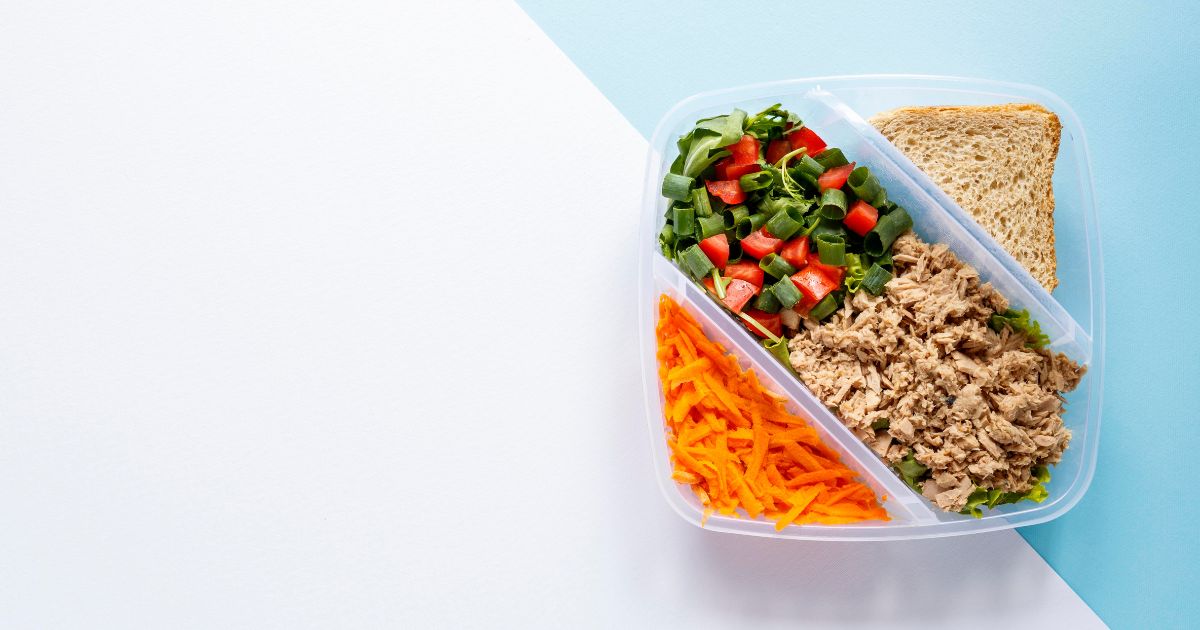
I loved as much as you will receive carried out right here The sketch is tasteful your authored subject matter stylish nonetheless you command get got an edginess over that you wish be delivering the following unwell unquestionably come further formerly again as exactly the same nearly very often inside case you shield this hike
You’re welcome! I appreciate your willingness to engage further. If you have any specific questions or topics you’d like to delve into, feel free to share them. Whether it’s about recent developments in technology, intriguing scientific discoveries, captivating literature, or anything else on your mind, I’m here to provide insights and assistance. Simply let me know how I can help, and I’ll be happy to assist you further!